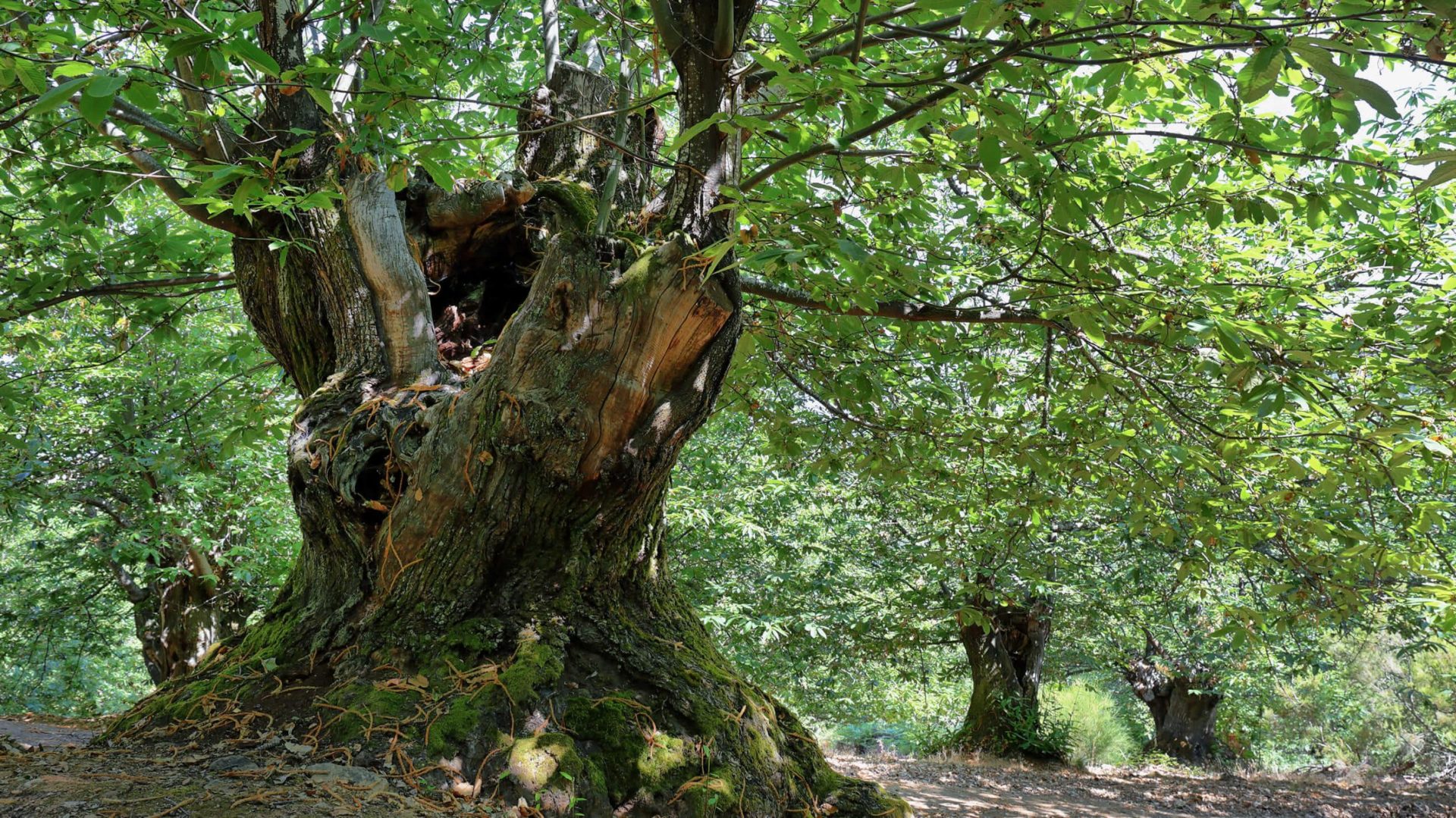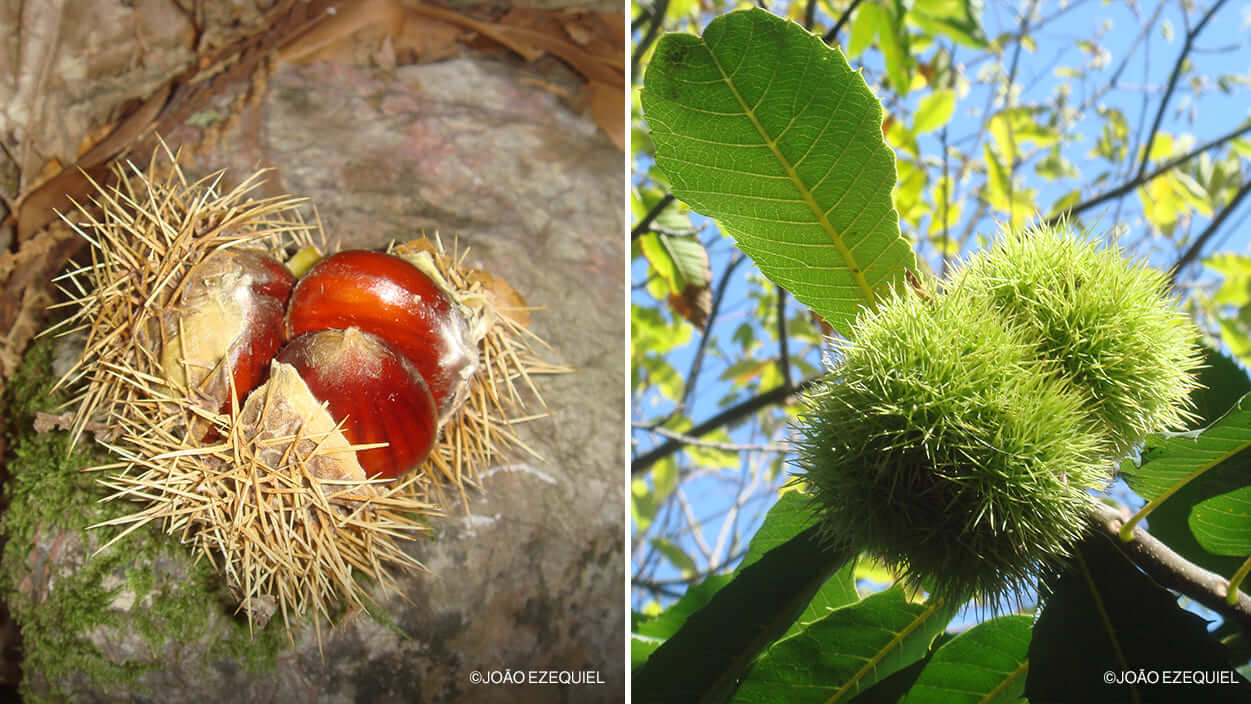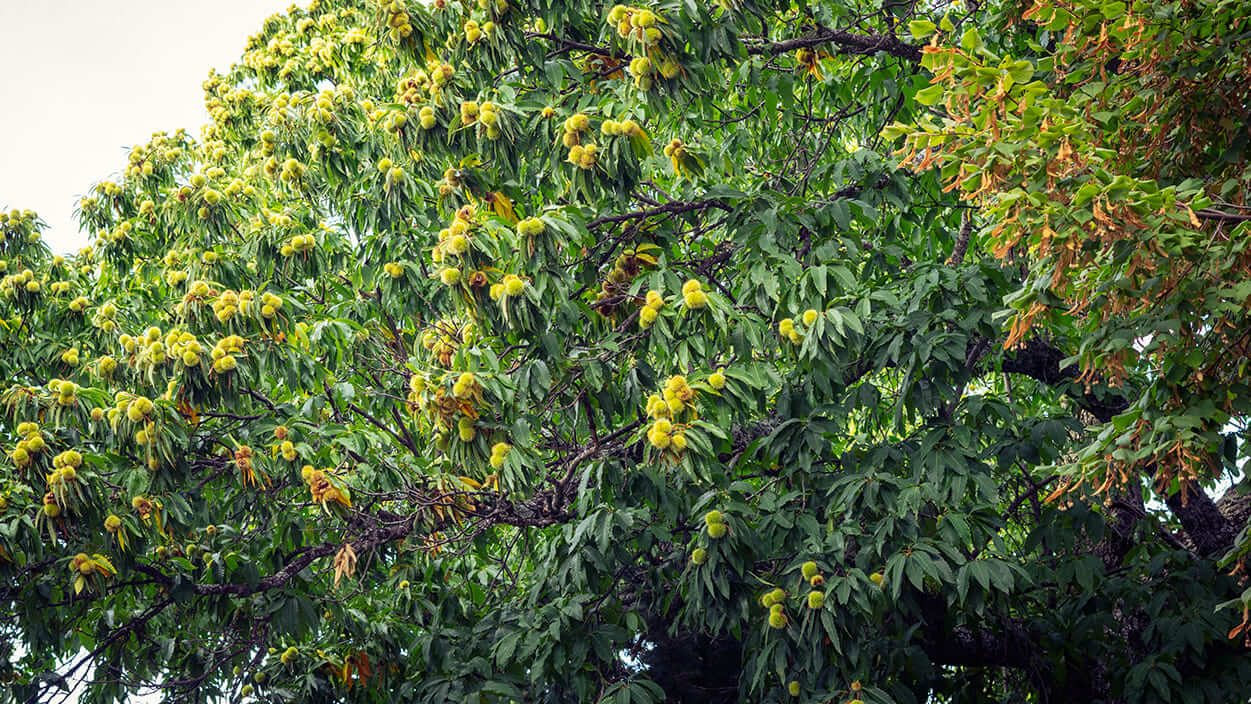At the end of October, the spiky cupules of chestnut trees (Castanea sativa), which resemble small hedgehogs, have already begun to fall. Inside them, the much sought-after chestnuts can be found. This is the case in the mountainous regions of Portugal, especially in the central and northern parts of the country, where the old chestnut trees provide shelter for dozens of species, including rare plants, birds of prey, and highly prized mushrooms.
Chestnut trees seem to have managed to survive during the most recent glacial period (Würm glaciation) in a few safe havens in central Europe and the Mediterranean. The chestnut tree seeds that withstood the cold and snow of this distant period have slowly consolidated the presence of the Castanea sativa species, but it was primarily through cultivation that it became widespread and valued in much of Europe.
The first written evidence of chestnut cultivation dates back to the 3rd century BC in the writings entitled Historia plantarum by Theophrastus. It is thought that the systematic cultivation of chestnuts in Europe is due to the Romans, mainly because of the value that was already attributed to chestnuts at that time.
The woods and forests where chestnut trees are prevalent in Portugal, even those populated by wild chestnut trees—those grown from seed as opposed to from grafting—were thus introduced or influenced by humans, and there are no known natural chestnut woods in mainland Portugal. However, their presence is so old that they are considered a native species.
Currently, there are more than 20 varieties of chestnut trees (Longal, Judia, Martaínha are some examples) planted to harvest chestnuts, but there are also forests where wood is the main purpose of cultivation (sticks for basketry, for example). Depending on whether the purpose of the plantation is to produce fruit or wood, these groups are called chestnut orchards and coppices, respectively.
The Sectoral Plan for the Natura 2000 Network emphasises the importance of old coppices and chestnut orchards, not just on account of chestnuts or chestnut wood, but also because of their ecological significance as a haven of biodiversity. Age plays a key role here, since ageing and even dead trees provide a home and refuge for a wide range of living things, such as all manner of animals, flora, fungi, and other organisms, which are unlikely to find a suitable habitat in younger trees and forests. In this sense, “Castanea sativa Forests ” have been established as a Natura 2000 habitat – Habitat 9260.
Chestnut trees live for a very long time—often for more than a thousand years—and can grow to a height of 30 to 35 metres, with a trunk diameter of up to 12 metres. Like some oaks, chestnut trees tend to lose their heartwood, the inner part of the trunk that rots as the trees age, forming hollow areas. This creates large cavities, crevices, areas of decaying wood and other natural irregularities that serve as shelter for many species, thus emphasising the importance of old chestnut trees as a habitat and micro-habitat.
The large canopies and these old, hollow trunks serve as shelter and nesting places for various birds, including birds of prey and woodpeckers, and attract numerous insects, such as those of the Elateridae family, which can be distinguished by the clicking sound they produce, or those of the Syrphidae family, important pollinators also known as flower flies.
In the shade underneath these old chestnut trees, you can also find some unusual plants, such as a subspecies of the three-leaved anemone that is endemic to Galicia and Portugal (Anemone trifolia subsp. albida), the eryngium duriaei, another species unique to the Iberian Peninsula, and the endangered martagon lily (Lilium martagon).
Mushrooms grow on the soil near the trunks. Some of them establish mutually beneficial relationships (mycorrhizae) with the roots of chestnut trees, such as the poisonous Hypholoma fasciculare species and the edible Caesar’s mushroom (Amanita caesarea), blushing amanita (Amanita rubescens), and chanterelle mushroom (Cantbarellus cibarius) species.





